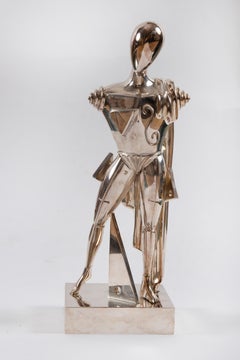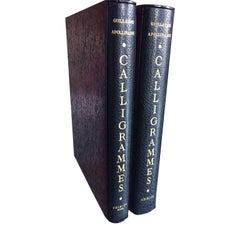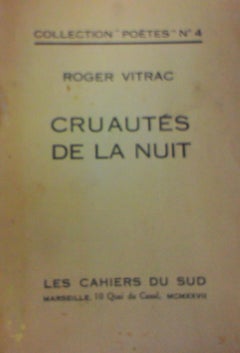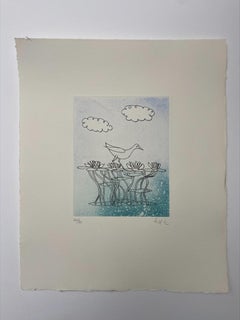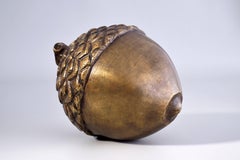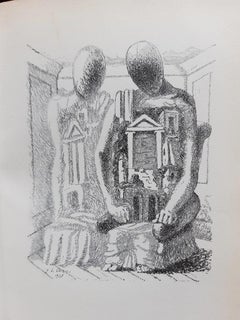Giorgio De Chirico More Art
The progenitor of metaphysical painting — a dreamlike, realist style embracing sharp contrasts, sculpted forms and odd juxtapositions — Giorgio De Chirico profoundly influenced many Surrealist artists of his time. His early sculptures and paintings explored the complexities of the mind and reflected his affinity for contemporary European philosophy and Freudian psychoanalysis. Even though the metaphysical movement lasted only a brief time, he left a strong impression on such legendary surrealists as Salvador Dalí, René Magritte and André Breton.
De Chirico was born in Volos, Greece, to Italian parents. His father was a Sicilian baron and engineer in charge of constructing a railroad in Greece at the time of his son’s birth. In his late teens, De Chirico studied art at various institutions in Athens and Florence. After his father died, in 1905, he enrolled in the Munich Academy of Fine Arts. Here, he discovered the writings of Friedrich Nietzsche and Arthur Schopenhauer that would help to shape his future works.
In 1909, De Chirico moved to Milan and then to Florence a year later, where he began experimenting with what would become his metaphysical style. After moving again, this time to Paris in 1911, his brother Alberto Savinio helped him get several small exhibitions of his work that eventually were noticed by Pablo Picasso and the poet Guillaume Apollinaire — and his paintings began to sell.
De Chirico was conscripted into the Italian Army in 1915 but was diagnosed with a mental disorder — likely anxiety — and sent to a military hospital where he met fellow artist Carlo Carrà. Together, they devised the metaphysical painting style that consisted of fantastical images of low-lit town squares uninhabited except for marble sculptures, dummies and stretched shadows, purposefully portrayed with flattened surfaces and warped perspectives.
By the 1920s, De Chirico’s style began incorporating Renaissance and Baroque elements, and later works, from the 1960s and ’70s, brought together neoclassicism, Surrealism and ancient mythology. His art is in major museum collections across the world, including the Tate Museum of Modern Art, in London; the Peggy Guggenheim Collection, in Venice; and the Metropolitan Museum of Art, in New York.
On 1stDibs, find Giorgio De Chirico prints, drawings, sculptures and more.
1970s Post-War Giorgio De Chirico More Art
Bronze
1930s Surrealist Giorgio De Chirico More Art
Handmade Paper
1920s Surrealist Giorgio De Chirico More Art
Paper
Early 2000s Surrealist Giorgio De Chirico More Art
Paper
2010s Naturalistic Giorgio De Chirico More Art
Bronze
19th Century Giorgio De Chirico More Art
Marble, Bronze
2010s Surrealist Giorgio De Chirico More Art
Oil, Canvas
20th Century Surrealist Giorgio De Chirico More Art
Lithograph
1890s Realist Giorgio De Chirico More Art
Bronze
1860s Realist Giorgio De Chirico More Art
Bronze
1990s Contemporary Giorgio De Chirico More Art
Bronze
15th Century and Earlier Giorgio De Chirico More Art
Bronze
1980s Surrealist Giorgio De Chirico More Art
Paper
Mid-20th Century Surrealist Giorgio De Chirico More Art
Canvas, Oil
Early 20th Century Art Deco Giorgio De Chirico More Art
Marble, Bronze
1920s Modern Giorgio De Chirico More Art
Paper, Etching
20th Century Giorgio De Chirico More Art
Bronze
1930s Surrealist Giorgio De Chirico More Art
Paper, Ink
Giorgio De Chirico more art for sale on 1stDibs.
Artists Similar to Giorgio De Chirico
- 1stDibs ExpertApril 5, 2022While Giorgio de Chirico was not considered a surrealist, his artwork would later go on to influence many surrealist artists. His style has been described as “metaphysical” and “modern”. Shop a selection of Giorgio de Chirico pieces from some of the world’s top art dealers on 1stDibs.
- 1stDibs ExpertApril 5, 2022Giorgio de Chirico was the founder of the art movement scuola metafisica. This movement was influential in the surrealist art movement as well. In his later years de Chirico also worked in the neo-Baroque style. On 1stDibs, find a collection of authentic Giorgio de Chirico pieces and prints from top sellers.
- 1stDibs ExpertApril 5, 2022Greek-born painter Giorgio de Chirico, one of the most famous and influential painters in history, painted over 190 pieces in styles ranging from neoclassical to neo-Baroque. Shop a collection of Giorgio de Chirico artwork from some of the world’s top sellers on 1stDibs.
